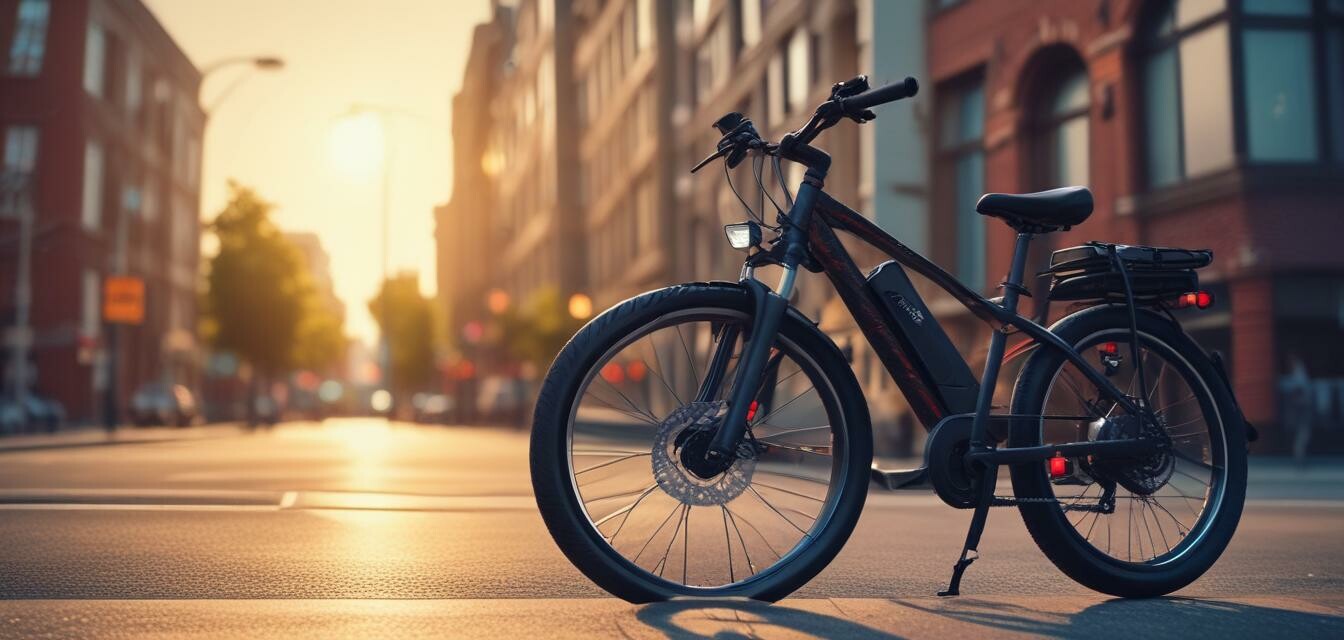
How to troubleshoot common electric bike issues
Key Takeaways
- Understanding battery care is crucial for optimal performance.
- Regular maintenance checks can prevent most issues.
- Know the signs of mechanical failures and how to address them.
- Utilize proper troubleshooting for electrical problems.
- Invest in quality accessories to enhance safety and performance.
Electric bikes have taken the urban commuting scene by storm, providing a quick and eco-friendly way to navigate busy city streets. However, like any vehicle, they are not immune to issues. In this article, we'll guide you through common electric bike problems and offer practical troubleshooting tips to keep your ride smooth and enjoyable.
Common electric bike issues
Before we dive into the solutions, let's look at some of the most frequent problems faced by electric bike users:
- Battery problems
- Motor issues
- Brake malfunctions
- Flat tires
- Electrical failures
Troubleshooting tips
Now that we've identified some common problems, let's discuss how to troubleshoot them effectively.
1. Battery problems
The battery is the heart of your electric bike. Issues with it can significantly affect performance. Here are a few tips to troubleshoot battery-related issues:
- Check the charge: Ensure the battery is fully charged. Sometimes, it's as simple as plugging in the charger.
- Inspect connections: Make sure all connections are secure and free of corrosion.
- Test with a multimeter: If possible, use a multimeter to check the battery voltage.
2. Motor issues
If your bike is not providing adequate power, the motor may be the culprit. Here’s what you can do:
- Check for error codes: Some motors have built-in diagnostics. Refer to your user manual.
- Inspect the wiring: Look for any frayed or damaged wires around the motor.
- Listen for unusual sounds: Grinding or clicking could indicate internal damage.
3. Brake malfunctions
Brakes are essential for safety. Here's how to deal with common brake problems:
- Check brake pads: Worn-out pads should be replaced immediately.
- Inspect cables: Ensure that brake cables are not frayed or loose.
- Test the brakes: Squeeze the brake levers to ensure they engage properly.
4. Flat tires
A flat tire can happen at the most inconvenient times. Here's how to manage this situation:
- Inspect the tire: Look for punctures or embedded debris.
- Check the air pressure: Ensure that your tires are inflated to the recommended PSI.
- Use a patch kit: Always carry a patch kit or a spare tube for quick fixes.
5. Electrical failures
If your electric bike is not turning on, it might be an electrical issue. Here’s how to troubleshoot:
- Check all components: Ensure that the battery, motor, and controller are all functioning properly.
- Inspect the wiring: Look for any loose connections or damaged wires.
- Reset the system: Refer to your owner's manual for instructions on resetting your bikes electronic components.
When to seek professional help
While many problems can be resolved through the above troubleshooting tips, some issues may require professional assistance. If you encounter persistent problems or feel uncomfortable handling repairs, do not hesitate to seek help from a certified electric bike technician.
Regular maintenance tips
Regular maintenance can help prevent many issues from arising in the first place. Here are some essential maintenance tips for electric bike owners:
- Clean the bike regularly to remove dirt and grime.
- Check tire pressure weekly.
- Inspect the battery terminals for corrosion.
- Lubricate the chain and gears regularly.
- Store the bike in a cool, dry place to prolong battery life.
Useful products for electric bike maintenance
Investing in quality maintenance products can greatly enhance your biking experience. Here are some categories to consider:
- Bike maintenance tools
- Bike locks & security
- Electric bike conversion kits
- Electric bikes
- Folding bikes
- Helmets & safety gear
Tips for beginners
- Familiarize yourself with your electric bike's features and controls.
- Always wear a helmet and safety gear when riding.
- Join local biking communities for advice and support.
- Practice riding in a safe area before taking to busy streets.
- Consider taking an electric bike safety course.
Pros
- Smooth and easy commuting experience.
- Environmentally friendly mode of transportation.
- Potential cost savings on fuel and parking.
Cons
- Initial investment can be higher than traditional bikes.
- Battery life can decline over time.
- May require more frequent maintenance compared to regular bicycles.
Conclusion
By understanding common electric bike issues and following these troubleshooting tips, you can ensure that your electric bike remains in optimal condition. Regular maintenance, prompt attention to problems, and using quality products will enhance your cycling experience. For further tips on electric biking, explore our Tips & Advice section.